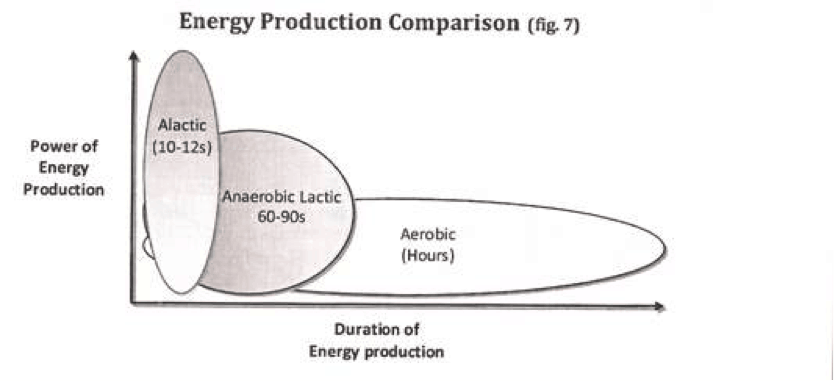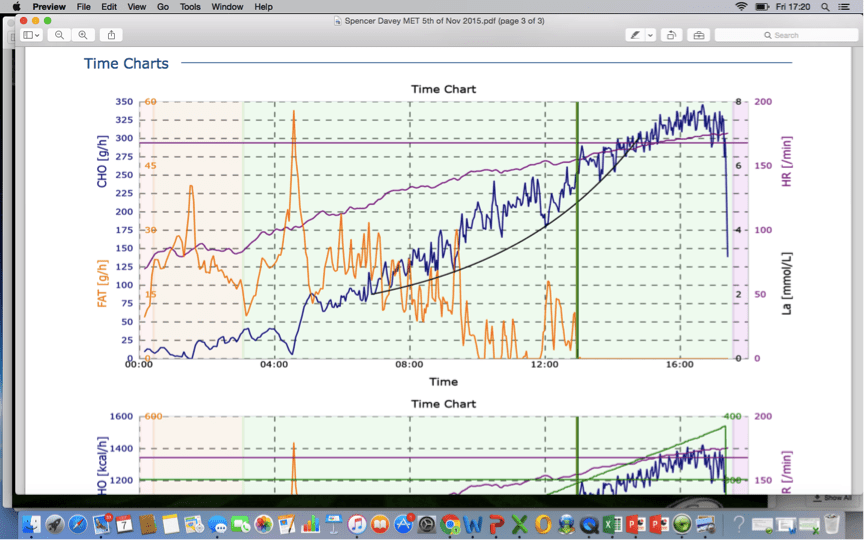Energy System Training- How to Stop Feeling Tired All The Time
When we exercise we use up more “fuel”. Fuel for workouts can come from the food we eat and also the food we have digested and have stored in various forms and in various places in the body. For example when we eat rice (a carbohydrate) we can store it within the muscle as glycogen (stored carbohydrate)
We have three energy systems, which interact with each other to supply us with energy for the daily function of our bodies and minds and also to workout.
Every cell in our body runs on something called ATP and all energy we use or produce is supplied as ATP.
The goal of our energy systems is to match energy production with energy output so that homeostasis is maintained.
When energy output goes up our production of ATP goes up to cope with the demand. Where fatigue occurs is when our production of ATP can no longer cope with the demands placed upon it though exercise.
Here are the three energy systems:
To the left of the graph is your alactic system. If you were to stand up out of your chair and run as fast as you can right now this is the energy system you would use. The alactic system can supply energy very quickly although its capacity is very small in that it can supply energy for around 10-12 seconds.
In the middle of the graph is your anaerobic lactic system. This can supply energy quickly (although not at the same rate as your alactic system) and for a more sustained period (60-90 seconds) than your alactic system.
Along the bottom and to the right is your aerobic system which can supply energy at moderate and low intensities for very long periods of time. Athletes in ultra endurance events have completed events lasting 26hrs which gives you some idea of the capacity of this system. Unlike your other energy systems your aerobic system supplies ATP in the presence of oxygen.
Why train your energy systems?
Here are some of the reasons our coaches may advise some energy system training:
- Increased feeling of wellbeing and feeling more “energized”
- So you can be successful in your sport or endurance event
- Improved body composition and fat loss
- Improved cardiac health
- To help you recover from weight training
One question we get asked a lot is “which type of energy system training is best for fat loss?”
You may have heard that high intensity interval training is best for fat loss but then whenever you step on a piece of cardio equipment at the gym they label the “fat burning zone” at quite a low intensity.
To explain this, take a look at this graph, which shows me (Spencer) on a bike with a gas mask on measuring the levels of respiratory gases I breath in and out to establish what “fuel” I am using and to what level .
On the right hand axis is heart rate in BPM (beats per minute). The pink line on the graph is my heart rate, which starts at around 60, beats per minute and builds to around 180 BPM.
The orange line on the graph shows how much fat I am using as fuel and the blue line how much carbohydrate.
As you can see at a lower heart rates (low intensity) I am using a greater amount of fat than carbohydrate. At around 120 BPM you can see a crossover where I change from using fat as my main fuel source to using mostly carbohydrate and at around 150BPM I stop using fat entirely and use only carbohydrate.
So, does this mean fat loss is best achieved at low intensity?
Not exactly. Whilst we use a greater percentage of fat at low intensity; when we perform high intensity training both our heart rate and respiratory rate is increased for the following 24 hrs. This is called exercise post oxygen consumption or (EPOC) and is measured by something called your respiratory quotient (RQ)
Low intensity cardio, high intensity interval training and weight training all show similar RQ so each will have a similar effect on total fat burning.
Where weight training and high intensity training may have the edge on low intensity training when it comes to changing your body composition, is through their effect on your genes, hormones and how you often have to recruit more muscle tissue to perform them.
Key point: You can use all types of exercise to increase your capacity, to get stronger, fitter or lose body fat but in order to optimise your health and get the lean muscled look most of us want, we need to blend resistance training, high intensity training and some low intensity training into a personalised program that suits your current ability.
Thanks for reading and feel free to share!
If you’d like to meet one of the team to discuss your training you can reach us using the form below.
Thanks
Spence
Start Your Fitness Journey Today
Book your complimentary personal planning session now
You’ll receive:
✔ In depth posture and movement analysis
✔ Full breakdown of your training history
✔ Our opportunity to fully understand your lifestyle
✔ In depth discussion on your goals and motivation
✔ We’ll take your starting measurements (optional)
✔ Jointly we’ll create your training and nutrition roadmap
✔ We’ll find the best package for you, your budget and your goal
Please expect a response within 4 hours during our office hours of Monday to Friday between 9am- 5pm. Enquiries outside of this time can expect a response within 12 hours.
Get in touch


